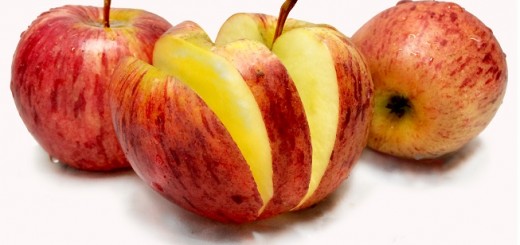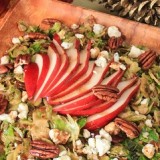California citrus adds zest to winter months
California Citrus Adds Zest to Winter Months
There’s more to oranges than just Navels oranges. Meet the Cara Caras and Blood oranges, unique members of the orange family.
By Robbie Sigona

Cara Caras less acidic than Navels and have a sweeter flavor with hints of tangy tangerine, grapefruit and even cranberry.
Wintertime in California means citrus. Lots and lots of citrus! We know you love our pesticide-free Navel and Valencia oranges, but have you ever had a Cara Cara or a Blood orange? These sweet-tart treats may look like Navel oranges on the outside, but it’s what’s inside that makes them unique.
We’ll start with the Cara Cara. This orange, also known as the Red Navel, looks nearly identical to a Navel orange on the outside, but their sweet and juicy interior is a lovely pinkish red. Cara Caras less acidic than Navels and have a sweeter flavor with hints of tangy tangerine, grapefruit and even cranberry – we’ve heard some say it’s almost a holiday punch flavor.
The pink color of the Cara Cara is a result of the high levels of lycopene, an antioxidant compound. Lycopene is also found in other red fruits and vegetables, such as tomatoes, guava and red bell peppers, and has been found to possess properties that may help prevent cancer, cardiovascular disease and macular degeneration. And there’s more good news: Cara Cara oranges are full of fiber and folate, and have 15 percent more vitamin C than the common Navel. Also, a typical Cara Cara provides 30 percent of the Recommended Daily Allowance of Vitamin A (Navels have 2 percent).
Cara Caras were first cultivated in Venezuela in the 1970s as a result of a cross between a Washington Navel and a Bahia Navel from Brazil. They’re becoming more and more popular in the U.S. and thrive in California’s San Joaquin Valley. Ours are from the San Joaquin Valley and they’re fantastic!
The beautiful Blood Orange is native to Italy and Spain, but the newest Blood orange variety, the Moro, is currently grown in California and will be in season through April. The crop we have in the stores now is also from the San Joaquin Valley.

Blood oranges are less acidic than Navel oranges, and simply burst with a rich citrus flavor finishes with a sweet berry – almost raspberry – aftertaste.
The outer skin of the Blood orange is often covered with a deep red blush, an undeniable indication of its variety, and the fruit itself has a deep reddish burgundy color due to the presence of anthocyanin, a pigment not present in most citrus, but common in many red fruits and flowers. Blood oranges are less acidic than Navel oranges, and simply burst with a rich citrus flavor finishes with a sweet berry – almost raspberry – aftertaste.
The sumptuous red juice of the Blood orange is becoming more common on breakfast and brunch menus, especially as part of a champagne and juice mimosa. They also add a lovely contrasting color to salads, chicken or fish dishes and their juice also makes for a good sauce base, whether for a sweet or savory dish. We have a couple outstanding recipes available here.
My favorite way to enjoy Cara Caras is simply out of hand, and I’ve found that my favorite way to enjoy Blood oranges is a half and half mix of their juice with regular orange juice. It’s a great way to start the morning when they’re in season.
As for selecting both Cara Cara and Blood oranges, select the oranges that are heavy for their size. For more tips, click here. Cara Caras and Blood oranges will be in season throughout the spring. Enjoy!











